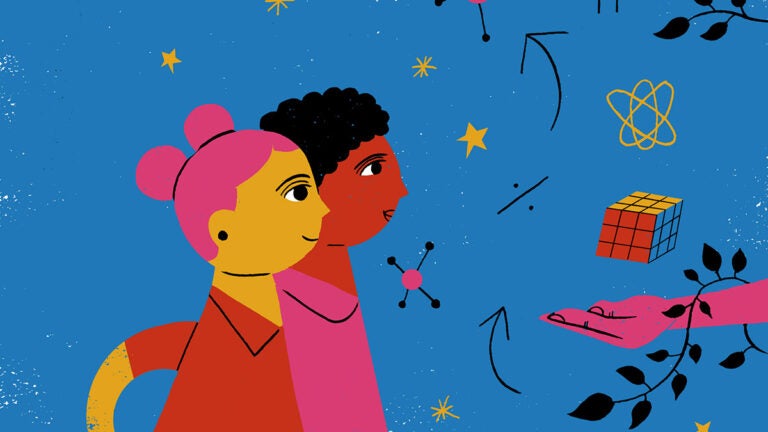
(Illustration/Hanna Barczyk)
“Girls Can’t Do Math”: How Unconscious Bias Leads to Gender Gaps in STEM
How we teach mathematics can discourage women from pursuing computation-heavy fields.
My earliest memories of learning math in school involve playing with numbers and finding patterns. I did not know at the time that I was learning math. All I knew was that my classmates and I were working together to solve puzzles.
My primary grade teacher, who happened to love math, made it learnable and fun for us. I would get excited to tackle these problems without feeling stressed about finding the correct answer. My teacher valued the process of solving the puzzle as much as finding an answer. I still remember vividly how we learned “skip counting” by looking for patterns. I was super happy and proud when I figured out that I could skip count by nines simply by decreasing the digit in the ones place by one and increasing the digit in the tens place by one (think 9, 18, 27, 36, …). The creativity I found motivated me to learn more and to choose a profession involving math.
Yet my experience was completely opposite to those of my sisters, who went to the same school. They were not solving interesting problems. They were mimicking the steps their teachers took when solving problems. All they did was practice the skills they learned with the same kinds of problems over and over again. They didn’t enjoy learning math and stayed away from it as much as possible throughout their school years.
My sisters’ experiences are not unique. Over the years, I have heard from many of my students how much they hate math and how their learning experiences left a distaste and resentment toward it. This discomfort often leads them to stay away from anything involving math.
Teachers have an implicit bias that makes them think girls have lower mathematical ability than boys.
Girls face unconscious biases with STEM and math learning
Although this is a problem affecting all students, girls are particularly vulnerable. Their struggles with math are generally attributed to their lack of mathematical ability. An experimental study I co-authored showed that teachers have an implicit bias that makes them think girls have lower mathematical ability than boys — even when boys answered with the same incorrect solutions. When female students struggle with math, the implicit biases surrounding them from different sources in and out of the classroom may signal to them that they do not have that ability. Such biases may particularly affect girls who don’t excel in learning math, which leads to a gender gap in math-heavy STEM fields.
Indeed, a recent study showed that male students who were not academically successful still majored in STEM fields such as engineering and computer science at a dramatically higher rate than female students with a similar achievement level. It could be that when girls don’t do well in math, the implicit messages they receive suggest it is because of their low math ability.
We, as educators, need to break this cycle. The negative and stressful emotions associated with math learning, especially for girls, cannot be overcome without making intellectual creativity and freedom part of the math learning experience. Reimagining math learning is possible by changing the mindset about what math is and the practices around how it should be taught.
Rather than narrowing mathematics to a set of rules and procedures, we need to provide students with the opportunity to experience other strands of mathematical understanding, such as finding solutions to authentic tasks and modeling real-world problems.



